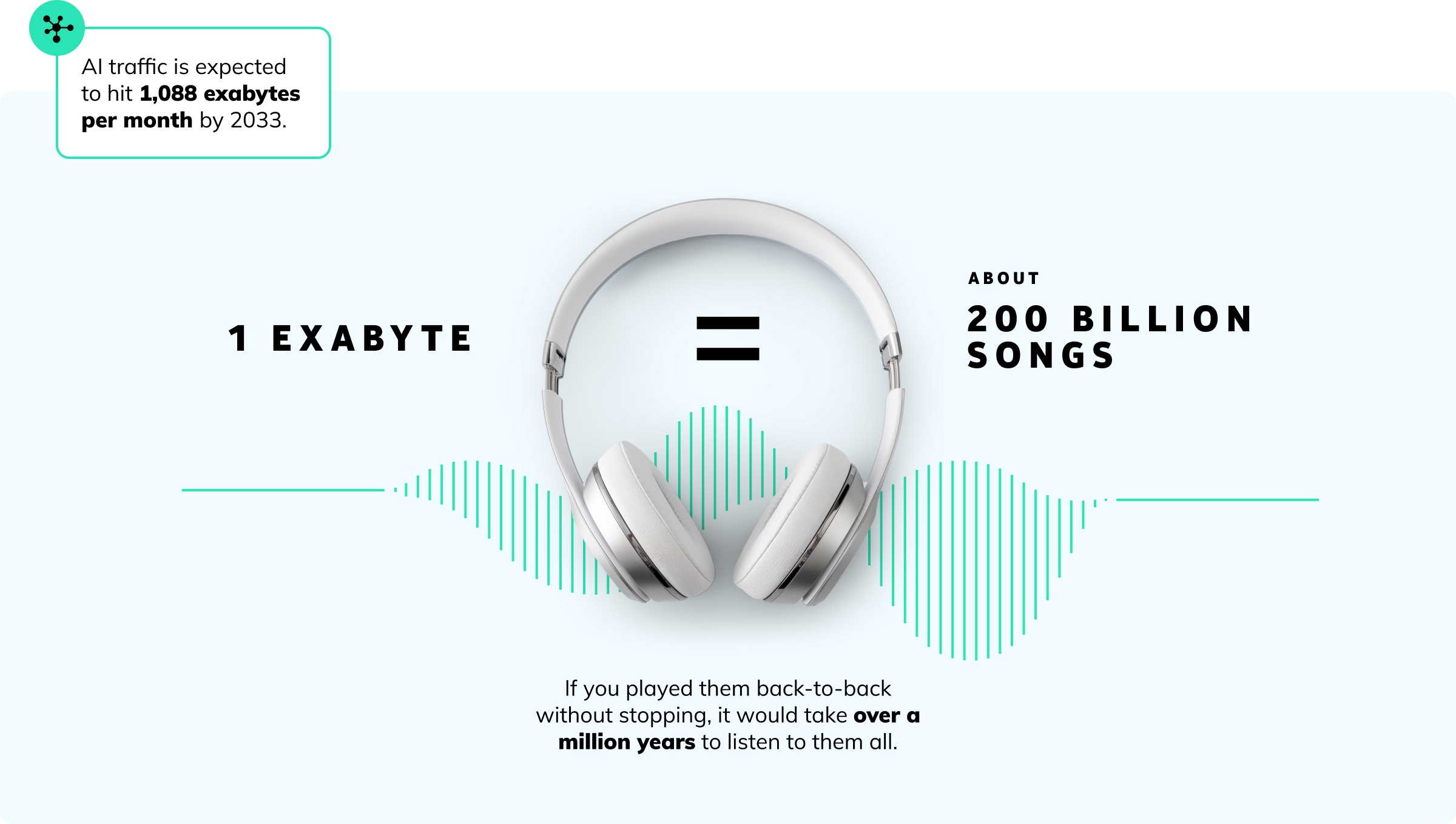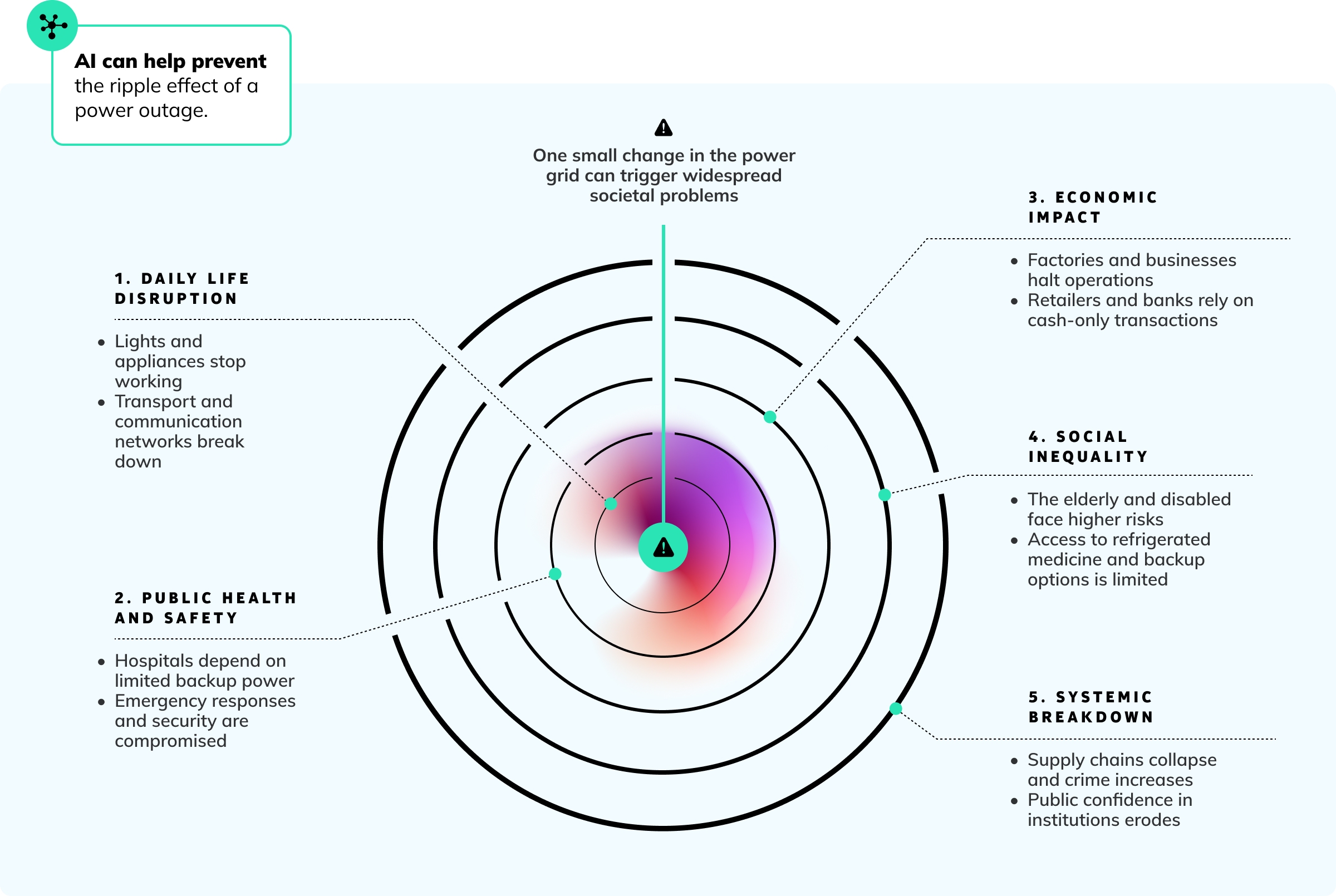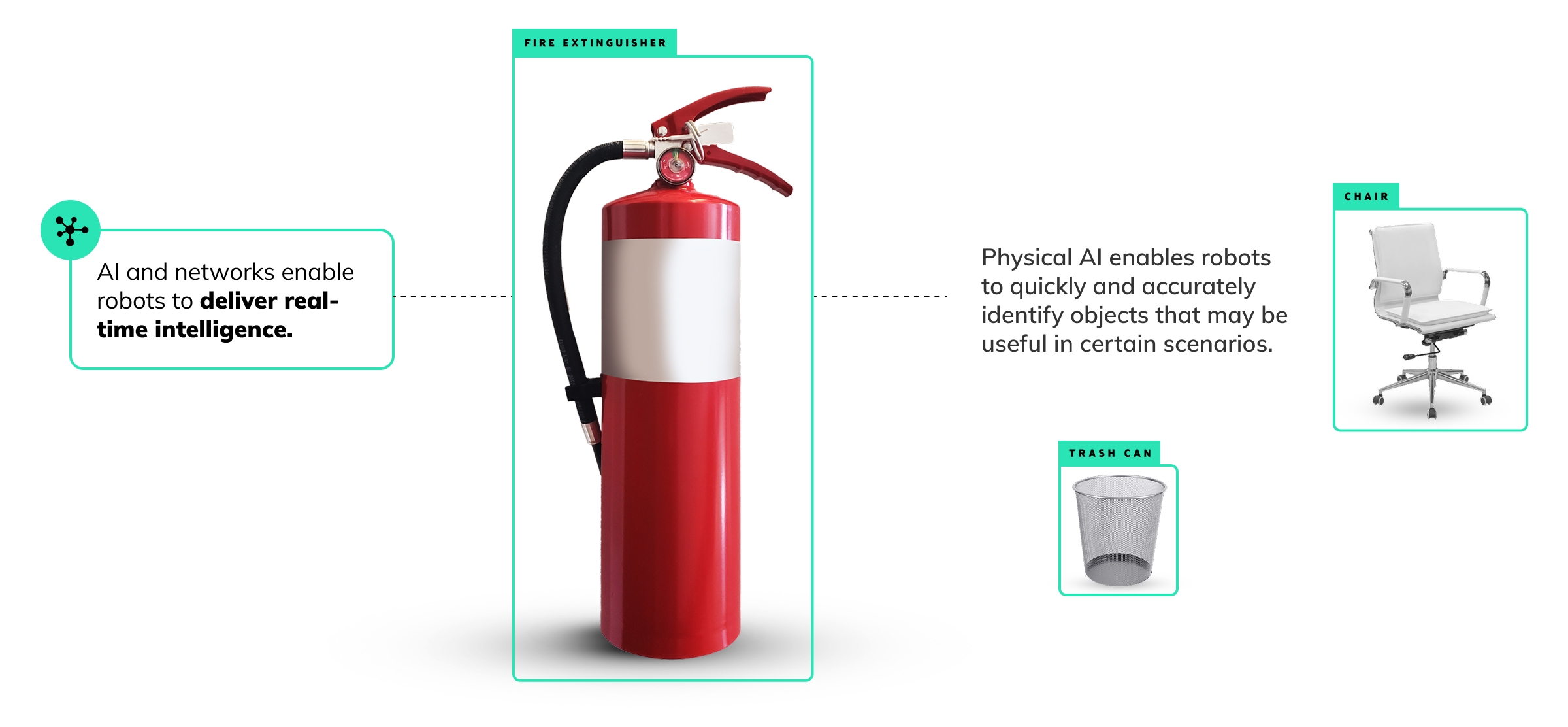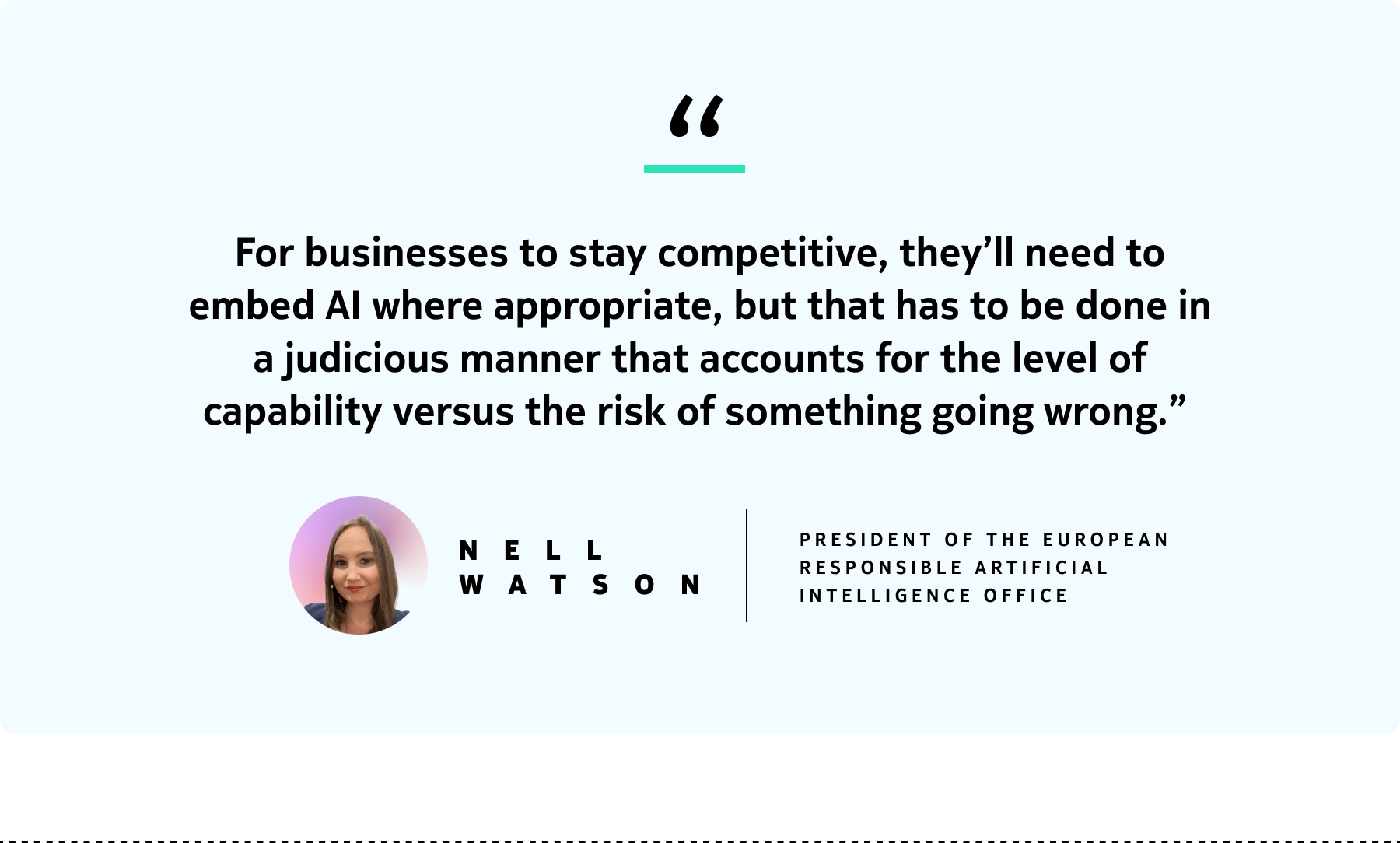Networks Will Power AI’s Next Big Breakthroughs
Takeaways
As AI traffic grows rapidly, future networks must become more responsive and resilient. Nokia Bell Labs' Sean Kennedy, Head of AI Research, states that this will create a mutually reinforcing relationship between AI and networks. “As networks get more powerful, AI feels more ubiquitous, and as AI gets more powerful, networks become more performant.”
Agentic AI, capable of autonomous planning and decision-making, relies heavily on real-time communication across robust networks. In sectors like energy, it can prevent blackouts by monitoring and adjusting grid conditions in advance.
Physical AI, enabled by sensor networks and large world models, allows machines to act in real-world environments. Emotional AI interprets human cues to provide empathetic responses and highlights the need for responsible development.
Summary by Bloomberg AI
To date, AI has been treated predominantly as a compute story, driven by generative AI and backed up by a huge wave of data center construction. According to Bloomberg Intelligence, annual spending on AI infrastructure passed $150 billion in 2024—five times the amount spent just two years prior—and spending is forecast to reach $185 billion in 2025.
But as we deploy ever more powerful AI models and applications, connectivity becomes increasingly critical. Telecom AI traffic is projected to grow at a 24% compound annual growth rate (CAGR) through 2033, increasing to 1,088 exabytes (EB) per month, according to the Nokia Bell Labs Consulting 2024 Global Network Traffic Report.

It’s not just the expected increase in data traffic—and the need for AI to respond instantly, securely and reliably—that makes connectivity so important. The pattern of data traffic arising from AI will be unique and together, these shifts will place unprecedented demands on global communication networks.
Meeting this surge will require networks that are faster, smarter and resilient enough to power AI’s next big breakthroughs—and those breakthroughs will also benefit networks.
“A symbiotic relationship between networks and AI is evolving,” says Sean Kennedy, Head of AI Research at Nokia Bell Labs. “As networks get more powerful, AI feels more ubiquitous, and as AI gets more powerful, networks become more performant.”
So, what are AI’s next big breakthroughs, and why is connectivity so critical to their successful implementation?

Agentic AI performs complex tasks, creates plans, makes autonomous decisions, independently analyzes risks and finds solutions. It works when a robust network allows agents to communicate quickly and reliably, driving toward rapid solutions—and it demands a lot of that network.
The energy sector is one area where agentic AI solutions are especially useful, enabling grid operators to identify and predict service deterioration before it occurs. “A small change in one part of a power grid can cause a blackout across an entire city or region,” Kennedy says. “Agentic AI can monitor and analyze risks, predict an outage and autonomously adjust the system to avoid a blackout.”

By continuously monitoring factors such as grid health, voltage fluctuations and weather conditions, agentic AI enables predictive maintenance, transforming energy grid maintenance from reactive to proactive.
None of this works, however, unless the right networking technologies and connectivity are in place. “Agentic AI can predict multiple outcomes and prepare for the best. But to do this, you’re going to need to communicate instantly and accurately between agents,” says Kennedy.

Another evolution will bring AI into the physical world, using sensor networks to perceive the environment and AI to decide and act on our behalf. Using very precise tools, physical AI can create digital twins of spaces that are fully synchronous with the physical world, and AI agents can then make decisions within those digital twins and apply those learnings to real life.
An early example built by Kennedy and his research team is a digital twin of a physical space that allows robots to explore it and understand the physical environment.
“We simply went to the robot and said, ‘Help, another robot is on fire,’” recalls Kennedy. “We didn’t give it any context. And the robot—which didn’t have arms, but had the intelligence to use its voice—drove up to the fire extinguisher and said to my team, ‘Here’s the fire extinguisher. You should use this.’”

In that experiment, the robot understood what a fire extinguisher is, what it does and, crucially, where it was in the physical space. Using its capacity for speech to interact with humans and understanding the environment in order to make autonomous decisions, the robot could come up with a plan to assist, Kennedy says.
Such developments are enabled by large world models (LWMs), advanced AI models that go beyond the text-based abilities of large language models (LLMs). LWMs combine multi-modal data to design real-world dynamics, enabling us to build AI systems that can understand and interact with the physical world.
When physical AI is applied at scale—across entire cities rather than just within office and factory environments—ubiquitous high-performance connectivity will be needed to coordinate devices in real time, ensure reliable data flows and support the low-latency decision-making that makes AI truly transformative.

Low-latency connectivity will also be key to emotional AI—a system that can understand and respond to human feelings. This will be as close as an AI tool can get to “knowing” us on a human level, using machine vision, sound and voice techniques that help computers understand images and videos to identify behavioral patterns in humans.
The more AI gets to know us—by analyzing voice cues or facial expressions to identify mood—the better emotional AI can support us, reacting with human-like empathy in situations such as customer service chatbot or HR virtual assistant conversations.
Because emotional AI relies on continuous streams of data (voice, facial expressions, biometric signals), it requires secure, responsive connectivity to transmit and process that information quickly enough for responses to feel natural.

But emotional AI, more so than other AI forms, brings with it potential drawbacks, and highlights the need for AI to evolve and develop in a responsible way. Human resources is one area where pitfalls are possible.
Nell Watson, President of the European Responsible Artificial Intelligence Office, says that by observing facial features and mannerisms, an emotional AI tool embedded in an HR team’s hiring algorithm could infer personal factors, such as a health condition, sexuality or ethnicity, in an environment where a degree of personal privacy is assumed.
“Potentially, those inferences can be incorporated into a decision that the system makes, in ways that we don’t expect,” Watson says. For example, this capability could unintentionally discriminate against legally protected groups and reinforce stereotypes. Responsible AI can ensure that innovation in this space advances human potential in a way that enhances fairness and transparency.

As AI continues to advance, its transformative potential will depend not just on the tools, systems and models themselves, but on the trusted networks that underpin them. The seamless exchange of intelligence and data—enabled by advanced connectivity—will be the foundation upon which AI applications run, enhancing everything from everyday experiences to critical business decisions.
When connectivity and AI evolve hand in hand, the result is not only more capable technology, but also an environment where AI can make our world smarter and augment human potential.
“Ultimately, I believe that AI can make everyone’s lives a lot better,” Kennedy says. “And it will take networks that adapt and advance alongside AI to turn that vision into reality.”
